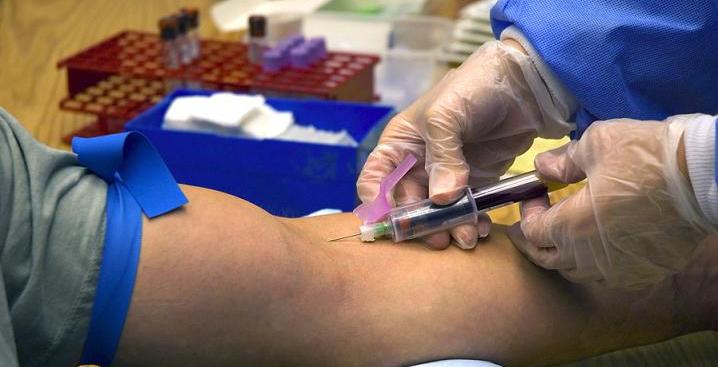
unlock Your Future: How a Career in Drawing Blood Offers Opportunities in Healthcare and Beyond
Are you seeking a fulfilling career that combines healthcare, precision, and meaningful patient interactions? A profession in drawing blood-also known as phlebotomy-could be your ideal pathway. This dynamic and essential role within the healthcare system not only offers job stability and growth prospects but also opens doors too diverse opportunities beyond conventional clinical settings. In this comprehensive guide, we explore how pursuing a career in drawing blood can unlock your future, the benefits of becoming a skilled phlebotomist, practical tips to get started, and inspiring real-life stories that demonstrate the impact of this profession.
What Is a Career in Drawing Blood?
Drawing blood, or phlebotomy, involves collecting blood samples from patients for laboratory testing, transfusions, or donation purposes. As a vital part of medical diagnostics, phlebotomists play an integral role in healthcare by ensuring accurate sample collection and patient safety. The job typically requires a combination of technical skills, compassion, and attention to detail.
Responsibilities of a phlebotomist
- Preparing patients and explaining procedures
- Performing venipuncture and capillary punctures
- Labeling and handling blood samples correctly
- Maintaining sterile techniques and safety protocols
- Managing patient records and documentation
- Ensuring hygiene and safety standards
Why Choose a career in Drawing Blood?
picking a career in drawing blood offers numerous benefits, making it an attractive option for healthcare enthusiasts. LetS explore the reasons why this profession stands out.
Benefits of a Career in Phlebotomy
- High Employability: phlebotomists are always in demand across hospitals, clinics, blood banks, and laboratories.
- Short Training Period: Certification programs can be completed in a few months, allowing you to enter the workforce quickly.
- Good Salary and Benefits: Competitive pay rates with opportunities for overtime and benefits.
- Flexible Work Schedules: Many roles offer part-time, evening, or weekend shifts, promoting work-life balance.
- Career Advancement: Pathways to specialized roles, supervisory positions, or further healthcare education.
- Personal Fulfillment: making a tangible difference in patient health and supporting critical medical processes.
Practical Tips to Launch Your Phlebotomy Career
Thinking about becoming a phlebotomist? Here are some practical steps to guide you on your journey:
Step 1: Obtain Certification
most employers require certification from recognized bodies such as the National Healthcareer Association (NHA), American Society for Clinical Pathology (ASCP), or the National Phlebotomy Association (NPA). Certification demonstrates competency and commitment.
Step 2: Complete Accredited Training Programs
- Look for programs accredited by the Commission on Accreditation of Allied Health Education Programs (CAAHEP).
- Courses typically cover anatomy, blood collection techniques, safety protocols, and patient interaction.
Step 3: Gain Hands-On Experience
Most certification programs include practical training, but additional internships or externships can enhance your skills and employability.
Step 4: Prepare Your Resume and Apply
- Highlight your certification, training, and any relevant healthcare experience.
- Search for job openings in hospitals, clinics, blood donation centers, and laboratories.
Opportunities in Healthcare and Beyond
The skills gained as a phlebotomist are transferable to various roles within healthcare and even outside clinical settings. let’s explore some of these opportunities.
Healthcare Settings
- Hospital laboratories
- Community clinics and health centers
- Blood banks and donation centers
- Urgent care facilities
- Private practices
beyond Traditional Roles
- Medical assistant: Assisting with patient care and administrative tasks
- Laboratory Technician: processing samples and analyzing results
- Medical Sales Representative: Promoting medical supplies and equipment
- Healthcare Educator: Teaching community health and wellness programs
- Phlebotomy Instructor: Training future professionals
Case Studies: Real-Life Impact of phlebotomy
Case study 1: From Certified Phlebotomist to Supervisory Role
Lisa, a certified phlebotomist working in a regional hospital, showed exceptional skills in patient care and sample collection.Over five years, she took additional courses in laboratory sciences and advanced her role to lead a team of technicians, significantly increasing laboratory efficiency and patient satisfaction.
Case Study 2: Community Blood Drive Coordinator
Michael started as a phlebotomist in a local blood bank. His dedication and leadership skills led him to coordinate community blood drives,boosting donation awareness and helping save countless lives through increased blood supply.
First-Hand Experience: What It’s Like to Draw Blood
Many aspiring phlebotomists report that the role is both challenging and rewarding.Successful professionals describe a typical day involving patient interaction, needle techniques, and meticulous sample handling. Building confidence and developing a gentle, reassuring manner is key to a positive experience-for both the patient and the technician.
Conclusion
Embarking on a career in drawing blood is a strategic choice for anyone interested in healthcare, offering a blend of technical skills, patient interaction, and career versatility. With relatively short training timelines and abundant job opportunities, becoming a phlebotomist can be your gateway to a stable, rewarding, and impactful profession. Whether you aim to work in a bustling hospital, a community health setting, or transition into advanced healthcare roles, the skills you acquire in phlebotomy will serve as a solid foundation for your professional journey. Unlock your future today-begin your path in drawing blood and make a difference in healthcare and beyond!
Comparison Table: Career Options in Drawing Blood and Related Fields
| Career Role | Training Duration | Average Salary (USD/year) | Growth Potential |
|---|---|---|---|
| Phlebotomist | 3-6 months | $35,000 – $45,000 | High |
| Laboratory Technician | 1-2 years | $45,000 – $60,000 | Moderate to High |
| Healthcare Assistant | 6 months – 1 year | $30,000 – $40,000 | Moderate |
| Medical Lab Manager | 4+ years (including experience) | $70,000 – $90,000 | High |
If you’re ready to take the first step toward a promising future in healthcare, consider training as a phlebotomist. Your journey to making a tangible difference starts with a single blood draw!